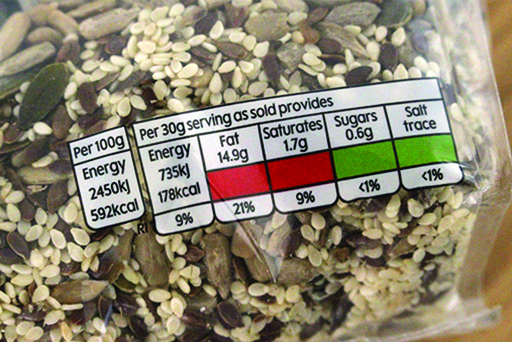3.1 Physiological requirement
Our bodies use a certain amount of nutrients each day. This needs to be replaced or taken from the body stores.
The amount of each nutrient used each day is called the physiological requirement. This is the amount required to prevent any signs of clinical deficiency. However, this leaves no margin for safety. It also does not allow for the fact that some people might need more because of their state of health, activity levels, etc.
It is often difficult to define when precisely someone is seriously short of a particular nutrient. This is because there may be no signs or only vague and generalised indicators, such as tiredness or poor skin condition. Instead, nutritionists use values much higher than the physiological requirement. These are called reference intakes or RIs.
In 2014, RIs replaced guideline daily amounts (GDAs), which you may still see on older packaging. Can you find examples of both among the labels you have collected or on foods on supermarket shelves?
One reason for replacing the GDAs was that there were several different versions of the guidelines for different groups in the population – men, women and children. Now, there is only one set of RIs. They are based on the maximum amounts needed by an average woman. Can you think of any reasons why RIs are better than GDAs – and any drawbacks to the RI system?

